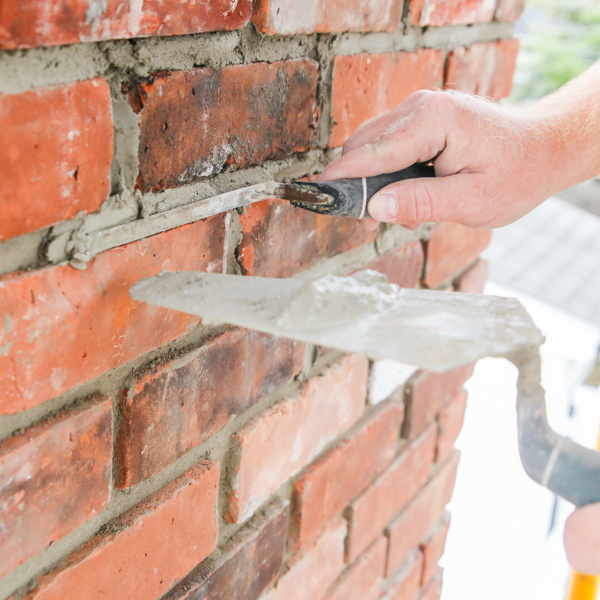Arrange a Chimney Sweep Today for a Clean and Safe Fireplace
Arrange a Chimney Sweep Today for a Clean and Safe Fireplace
Blog Article
Unlocking the Keys of Sustainable Masonry Building Practices for Eco-Friendly Structures
In the realm of modern-day building, the search of sustainable techniques has become extremely important. Amongst the myriad approaches to green structure, sustainable stonework building attracts attention as a reliable and long lasting approach that holds a wide range of untapped possibility. From the selection of products to cutting-edge building and construction methods, the tricks to attaining sustainability within stonework construction are diverse and interesting. By discovering the benefits, materials, techniques, and future fads of sustainable masonry, a deeper understanding of how these methods can shape the future of environment-friendly structures emerges.
Advantages of Sustainable Masonry Building
Embracing lasting stonework building and construction techniques not only reduces environmental impact yet additionally provides lasting financial benefits to builders and communities. By using materials like recycled blocks, obstructs, and stones, home builders can considerably lower the carbon footprint of their jobs while advertising resource efficiency. Furthermore, sustainable masonry building and construction techniques, such as proper insulation and thermal mass residential properties, can boost energy effectiveness within structures, leading to minimized operational expenses with time.
Furthermore, the sturdiness and resilience of masonry structures contribute to long-lasting economic benefits. Buildings built making use of sustainable masonry methods frequently need less repair and maintenance, converting to cost savings for contractors and homeowner. The long life of masonry products likewise guarantees that frameworks continue to be secure and secure, lowering the need for frequent remodellings or replacements.
Eco-Friendly Stonework Materials
Utilizing eco-friendly stonework products is an essential step in the direction of boosting the sustainability of building and construction methods and minimizing environmental influence while maximizing long-lasting economic advantages. Sustainable masonry materials are sourced, produced, and utilized in a way that reduces total ecological impact. Products such as recycled bricks, reclaimed rock, and lasting concrete blocks are coming to be increasingly preferred options for eco-conscious building contractors. Recycled bricks, as an example, not just draw away waste from land fills however also require much less power to produce compared to new bricks. Recovered stone provides a special visual allure while minimizing the demand for brand-new quarrying. Lasting concrete obstructs integrate recycled aggregates and may feature improved insulation buildings, adding to energy effectiveness in buildings.
In addition, all-natural products like adobe, rammed earth, and straw bales offer superb thermal mass buildings, reducing the need for heating and cooling power. These products are commonly in your area readily available, advertising local economic climates and lowering transportation-related carbon discharges. By selecting green stonework materials, building and construction tasks can considerably decrease their ecological footprint and contribute to the creation of healthier, more lasting built settings.
Energy-Efficient Masonry Strategies
Energy performance plays an essential function in enhancing the sustainability of masonry building practices. By applying energy-efficient stonework methods, contractors can significantly decrease the general power intake of a structure, leading to lower functional prices and a smaller sized ecological impact. One vital energy-efficient stonework technique is using thermal mass, which involves integrating dense products like concrete or block right into the building's structure to take in and keep warm. This aids control indoor temperature levels, decreasing the need for mechanical home heating and cooling down systems.

Advancements in Lasting Masonry
Recent improvements in lasting masonry methods have produced ingenious methods that are reshaping the construction industry. One such technology is the growth of self-healing concrete, which makes use of microorganisms embedded within the concrete to heal cracks autonomously. This development not just decreases upkeep expenses yet also improves the durability of masonry frameworks, adding to their sustainability.
Another notable development is using recycled aggregates in masonry construction - masonry contractor. By incorporating materials such as crushed ceramic waste or recycled glass right into concrete blends, building contractors can lower the ecological effect of building tasks while preserving structural stability. This practice not only diverts waste from landfills however also conserves natural deposits, making it a crucial improvement in sustainable stonework building and construction
In addition, the assimilation of digital design devices, such as Structure Info Modeling (BIM), is reinventing the way masonry frameworks are planned and created. BIM enables even more exact calculations, lowered material wastefulness, and improved power efficiency, eventually leading to even more lasting building techniques. These developments jointly signify an encouraging future for sustainable masonry building and construction in the age of environmentally friendly structures.
Future Trends in Masonry Sustainability
With the ingenious helpful hints strides made in sustainable masonry techniques, the future patterns in stonework sustainability are poised to additional revolutionize the building and construction industry. One of the crucial trends forming the future of stonework sustainability is the enhanced integration of innovation. Developments such as Building Information Modeling (BIM) and online fact simulations are being made use of to enhance stonework building and construction procedures, leading to decreased material waste and enhanced power performance in structures.
Furthermore, the development of novel sustainable materials is readied to play a substantial duty in boosting the eco-friendliness of stonework building and construction. masonry contractor. Innovations like self-healing concrete, recycled aggregates, and bio-based binders are gaining grip for their capacity to decrease ecological influence while keeping architectural stability

Conclusion
To conclude, sustainable masonry building practices supply various advantages for environment-friendly buildings. By making use of environmentally friendly products and energy-efficient techniques, stonework can add to an extra sustainable constructed atmosphere. Innovations in lasting masonry are continually being established to better improve the ecological performance of structures. Looking towards the future, the fad of masonry sustainability is anticipated to grow, causing more eco-friendly and energy-efficient building and construction methods in the years to come.
Report this page